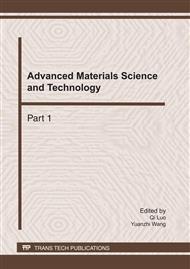p.979
p.983
p.987
p.993
p.998
p.1006
p.1013
p.1019
p.1025
The Design and Application of UAV’s Digital Steering Gear
Abstract:
For a special electromagnetic environment and the installation of environmental requirements of UAV (unmanned aerial vehicle) airborne, a design of digital anti-jamming steering gear is given. The composition, functions and working principle of the steering gear are described in details. The key circuits of functional modules are given, introduce a CDMA (code division multiple access) communication protocol of Digital Servo instruction and TDMA (time division multiple access) state data frame format. Take a UAV as an example, discusses the multi-steering application in airborne systems workflow. The application results showed that: this design not only improves the steering anti-jamming capability, ensures that the steering gear in the normal operation of complex electromagnetic environment, but also greatly reduces the UAV onboard computer control interfaces, improves flexibility and reliability.
Info:
Periodical:
Pages:
998-1005
Citation:
Online since:
January 2011
Authors:
Keywords:
Price:
Сopyright:
© 2011 Trans Tech Publications Ltd. All Rights Reserved
Share:
Citation:


